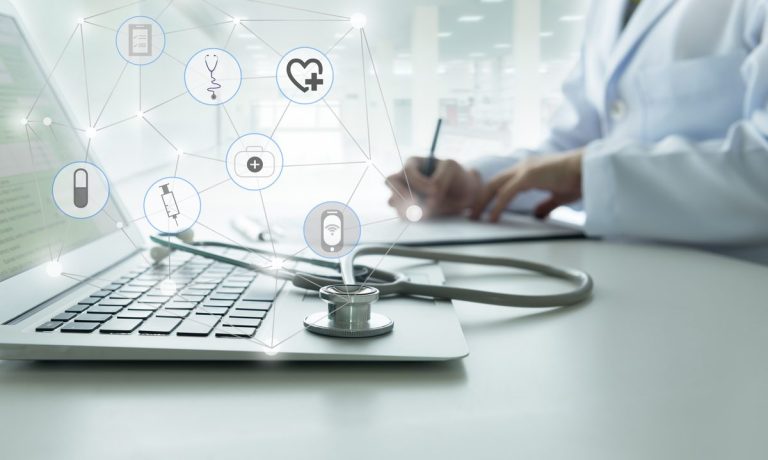
While telemedicine maintains its growth trajectory, technology and treatment are merging into solutions based around connected voice and artificial intelligence (AI), creating a new generation of voice-powered diagnostics tools and virtual patient assistants.
Nowhere is this new tech uptake more prevalent than with Amazon’s announcement last week that its Alexa Smart Properties unit is bringing connected voice capabilities to assisted living facilities and hospitals, enabling easier direct communications between patients, loved ones and medical staff.
Of the new Alexa healthcare deployment, Peachy Hain, executive director of Medical and Surgical Services at participant Cedars-Sinai, said, “Voice is intuitive for patients, regardless of age or tech savviness. It’s a total gamechanger for enhancing our hospital experience.”
While placing Amazon Echo devices at a patient’s bedside to improve communications favors patient experience, other projects are focusing on making EHR more efficient for practitioners.
For example, Microsoft is expected to complete its $16 billion acquisition of speech recognition firm Nuance Health in December.
As the Associated Press (AP) reported, Nuance was instrumental in developing Apple’s Siri digital voice assistant Siri, and “has since shifted its focus to health care, including a product that listens in on exam room conversations between physicians and patients and automatically writes up the doctor’s recommendations, such as for prescriptions or lab work.”
Expect more of this as healthcare undergoes a digital transformation made more urgent by the pandemic, bringing trends like voice and AI into healthcare settings at an accelerated pace. Speech recognition not only helps streamline care, but also experience. That’s an imperative.
In the study Connected Healthcare: What Consumers Want From Their Healthcare Customer Experiences, a collaboration with Rectangle Health, PYMNTS discovered “a significant correlation between consumers’ access to digital, time-saving tools and their loyalty to healthcare providers. The availability of these time-saving digital tools will remain a key determinant of a positive patient experience for many key demographics.”
Get the study: Connected Healthcare: What Consumers Want From Their Healthcare Customer Experiences
Turn to Your Smartphone and Cough
Voice recognition powered by AI not only improves patient experience, but adds intriguing new capabilities to the growing telehealth field, notably in the role smartphones can play.
For example, a relatively new digital diagnostic field called “acoustic epidemiology” is helping physicians and clinicians diagnose patients by having them cough into their smartphone.
The Wall Street Journal recently reported on the work of AI companies including Hyfe and ResApp Health in this area, noting that listening to a cough using AI can reveal a lot.
“Researchers around the world are trying to turn the humble cough into an inexpensive tool to diagnose and stop respiratory-disease killers like tuberculosis and Covid-19,” WSJ reported.
“They’re collecting recordings of millions of the explosive sounds from patients and consumers on smartphones and other devices. And they’re training artificial intelligence to find patterns to try to identify the type and severity of disease from the cough.”
Voice algorithms are proving their worth in more healthcare applications.
Dr. Simon Wallace, chief clinical information officer at Nuance Heath, recently told Healthcare IT News, “Using your voice is a more natural and efficient way to capture the complete patient story. It can also speed up navigation in the EPR system, helping to avoid multiple clicks and scrolling. The entire care team can benefit — not just in acute hospitals but across primary and community care and mental health services.”
See also: Amazon Teams with Hospitals, Assisted Living Centers to Boost Productivity